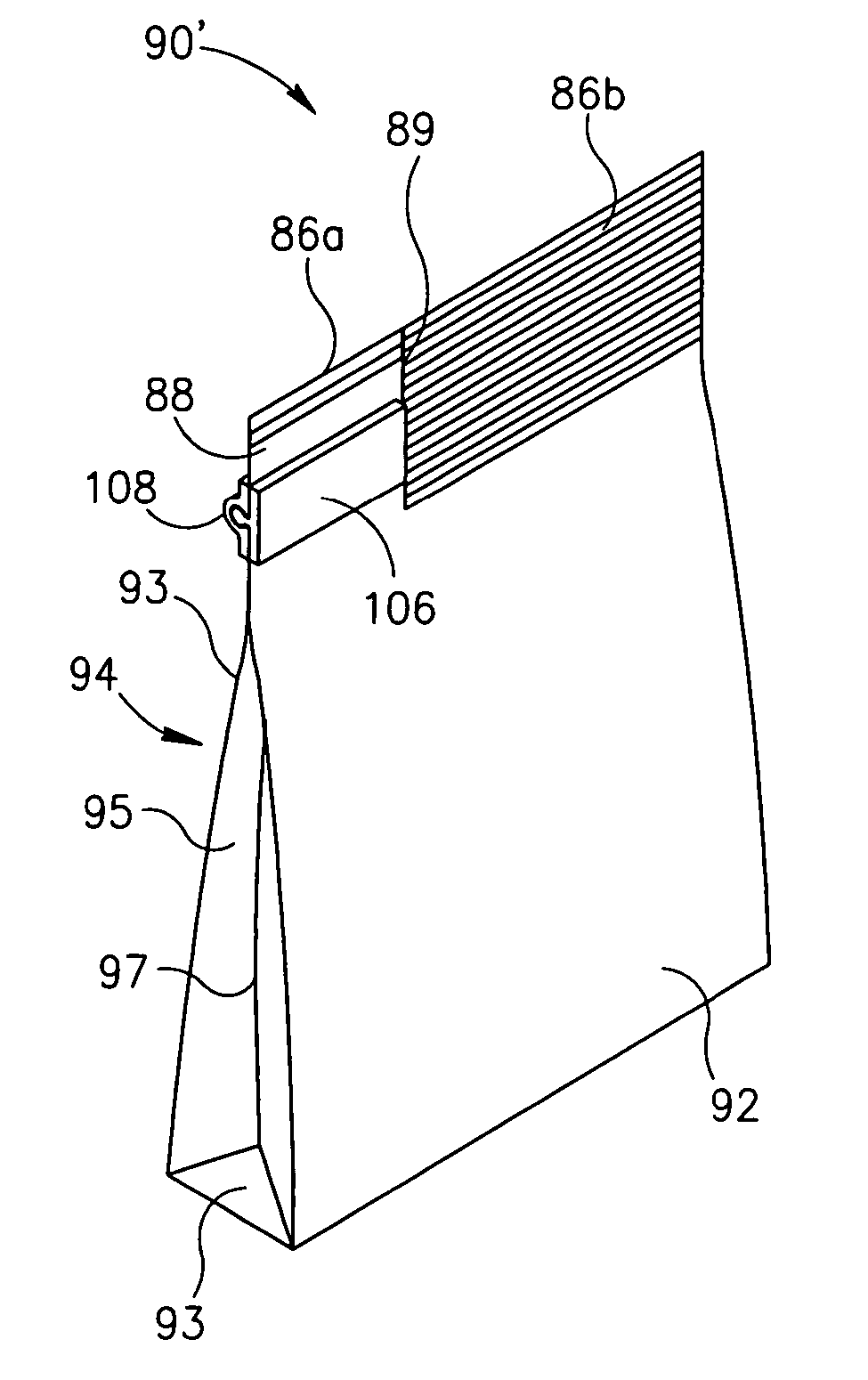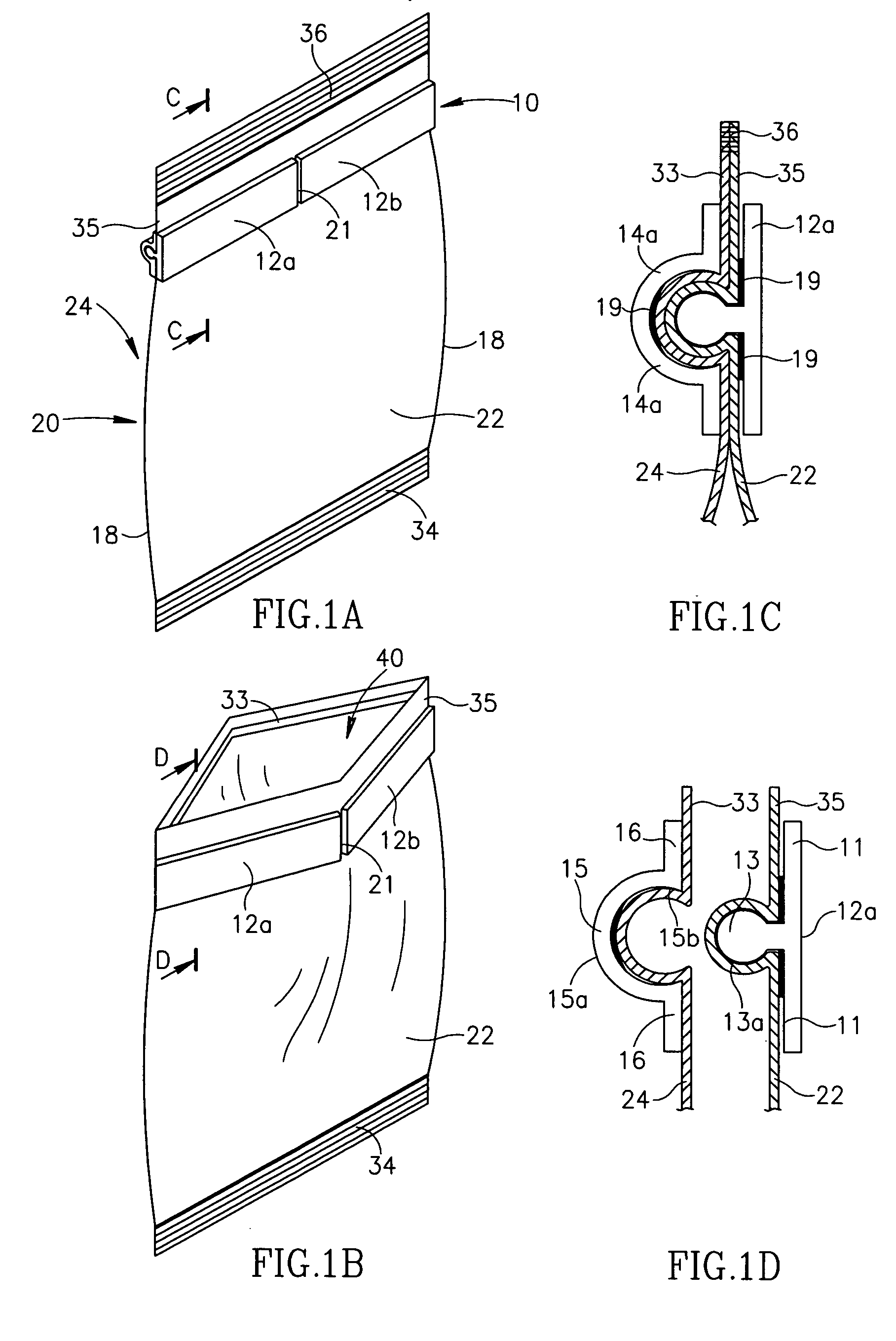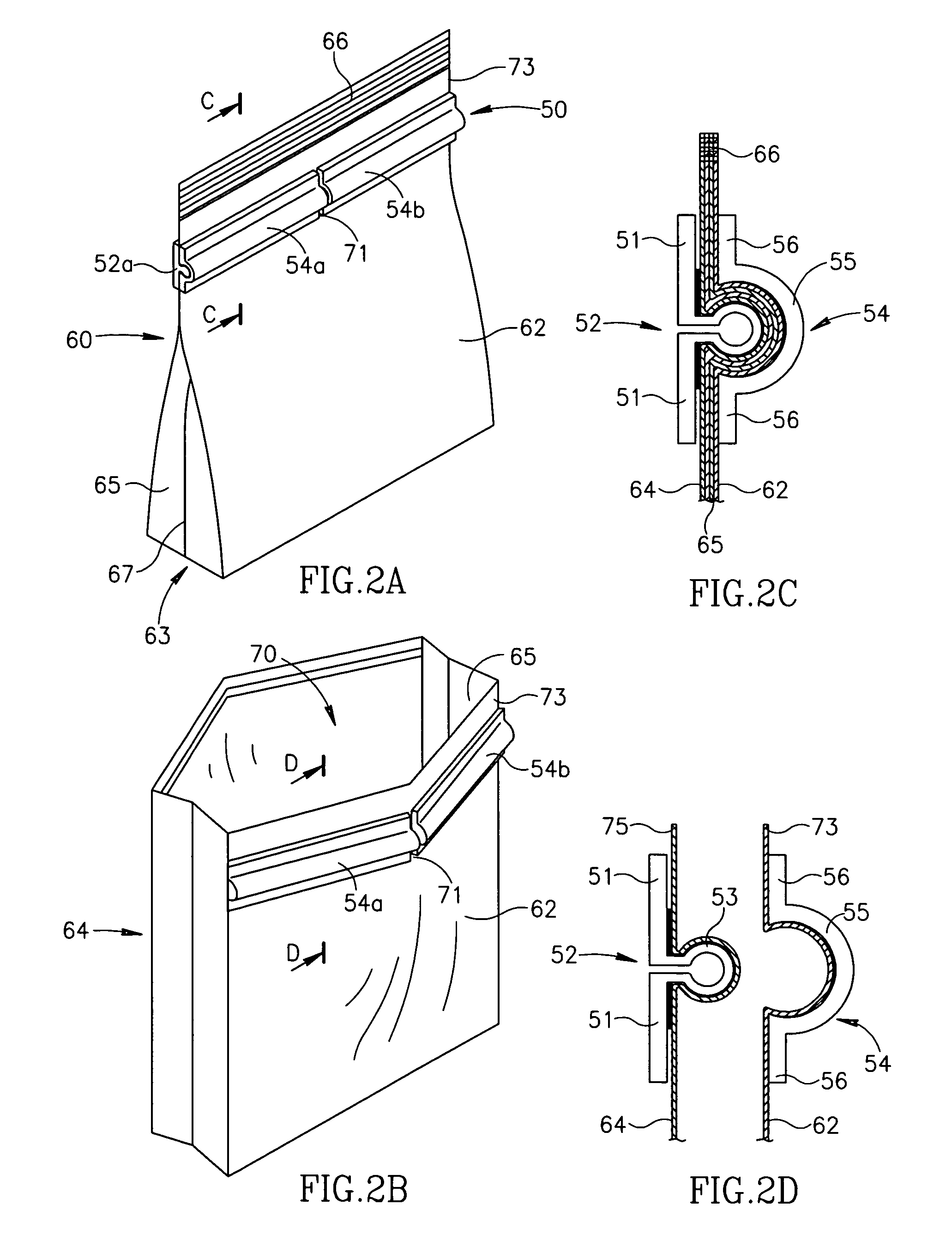Reclosable containers
a container and reversible technology, applied in the field of reversible container closures, can solve the problems of hindering the closure operation, limiting the separation that can be obtained, and the internal closures that cannot fit some goods, so as to enhance the accessibility of the container contents
- Summary
- Abstract
- Description
- Claims
- Application Information
AI Technical Summary
Benefits of technology
Problems solved by technology
Method used
Image
Examples
Embodiment Construction
[0028] The present invention provides an air-tight closure for a container for allowing re-closing the container after it is initially opened and for enhancing accessibility to the container contents when opened. The present invention is a continuation-in-part of U.S. patent application Ser. No. 10 / 414,899 filed on Apr. 16, 2003, the content of which is incorporated herein by reference.
[0029] Referring to the drawings, FIGS. 1A-1D show a closure, generally designated 10, in combination with a flexible bag, generally designated 20, in accordance with one embodiment of the present invention. The closure enables the bag to be re-closed and reused. The closure comprises two or more separate sections having a gap there between. Bag 20 comprises two opposite walls, a front wall 22 and a rear wall 24 connected at lateral sides 18 and sealed at their bottom and top by seals 34 and 36, respectively. The bag is preferably made of a single or multi layer sheet material such as plastic film, p...
PUM
| Property | Measurement | Unit |
|---|---|---|
| Flexibility | aaaaa | aaaaa |
| Width | aaaaa | aaaaa |
| Distance | aaaaa | aaaaa |
Abstract
Description
Claims
Application Information
 Login to View More
Login to View More - Generate Ideas
- Intellectual Property
- Life Sciences
- Materials
- Tech Scout
- Unparalleled Data Quality
- Higher Quality Content
- 60% Fewer Hallucinations
Browse by: Latest US Patents, China's latest patents, Technical Efficacy Thesaurus, Application Domain, Technology Topic, Popular Technical Reports.
© 2025 PatSnap. All rights reserved.Legal|Privacy policy|Modern Slavery Act Transparency Statement|Sitemap|About US| Contact US: help@patsnap.com



